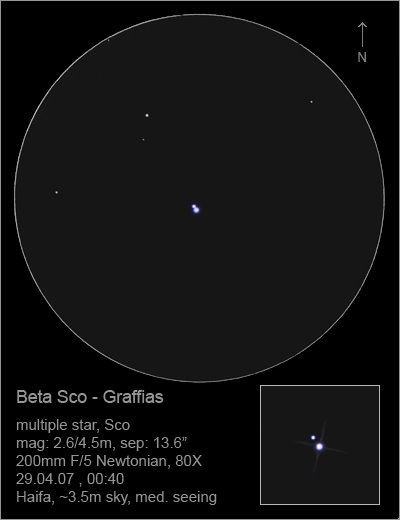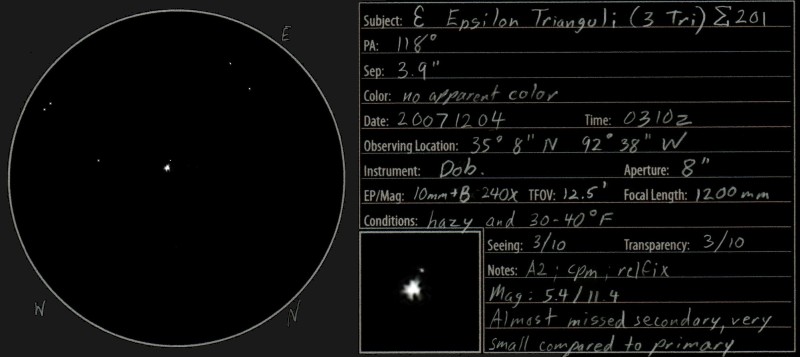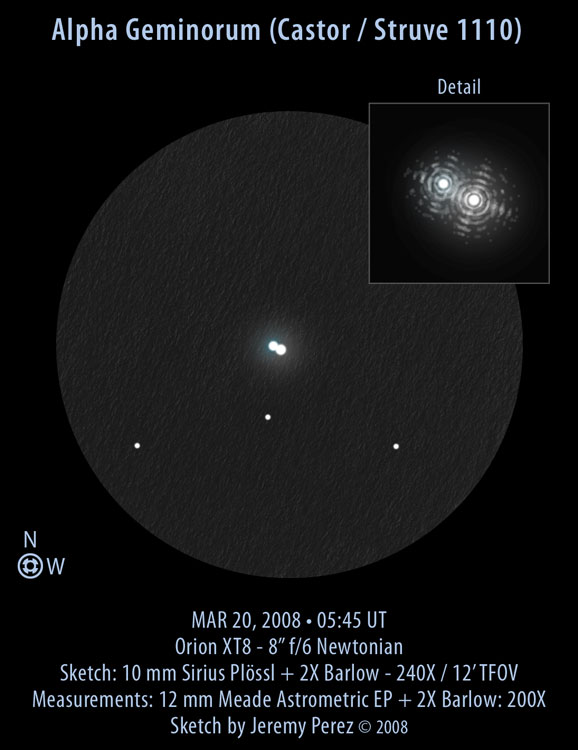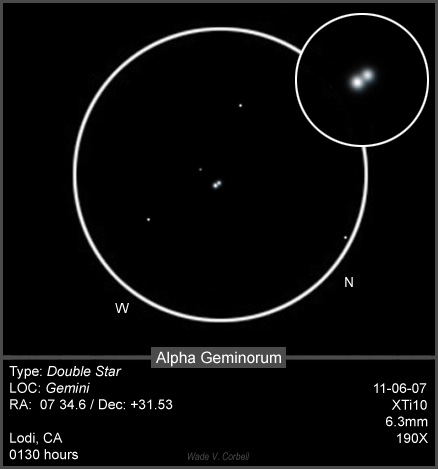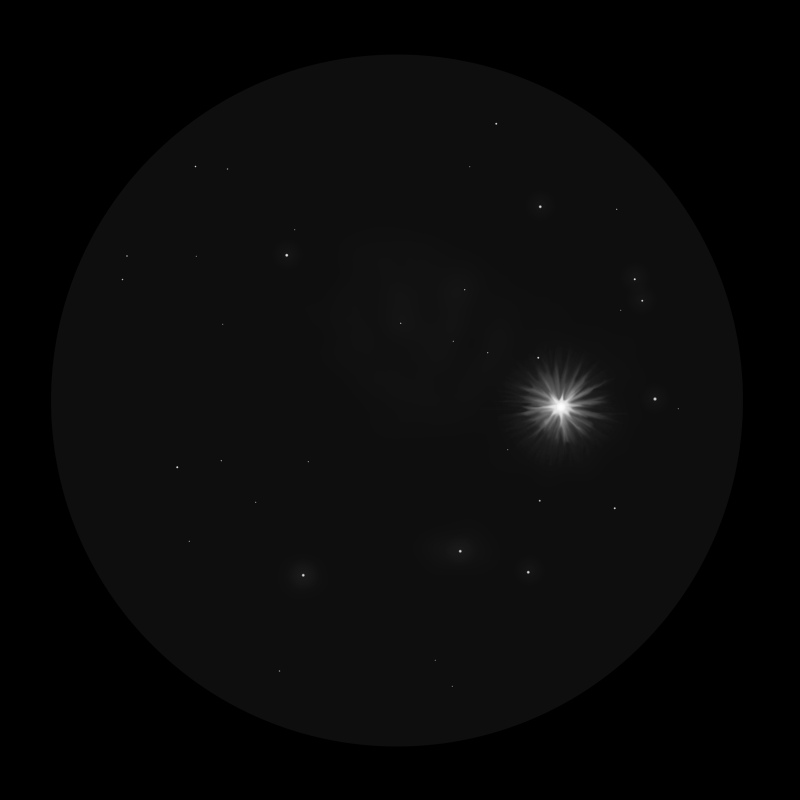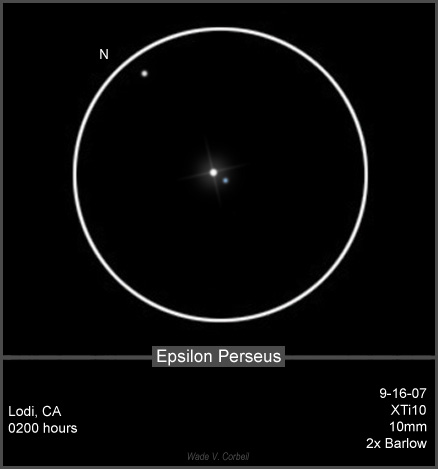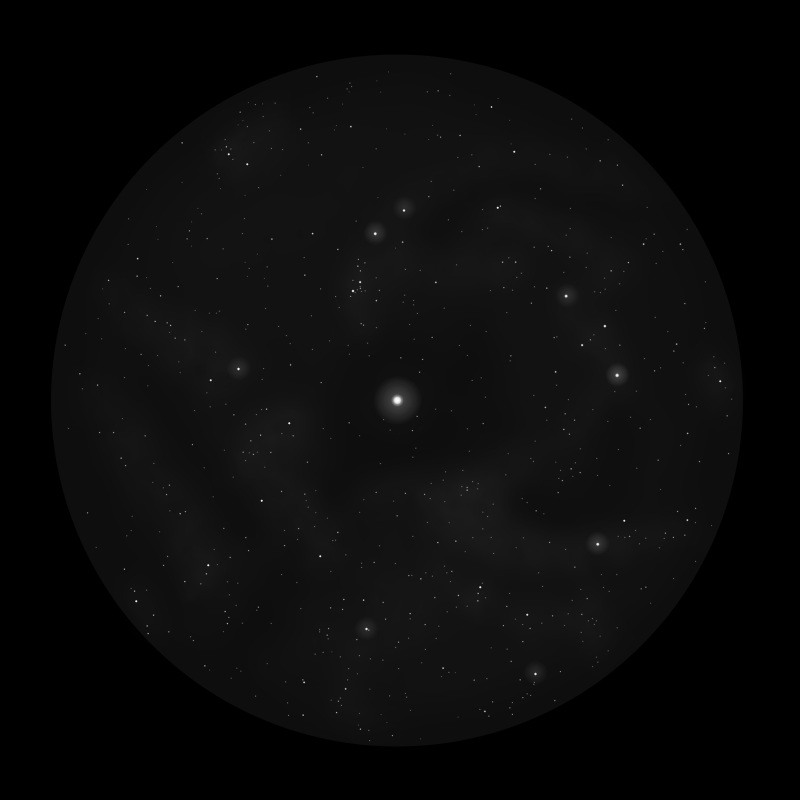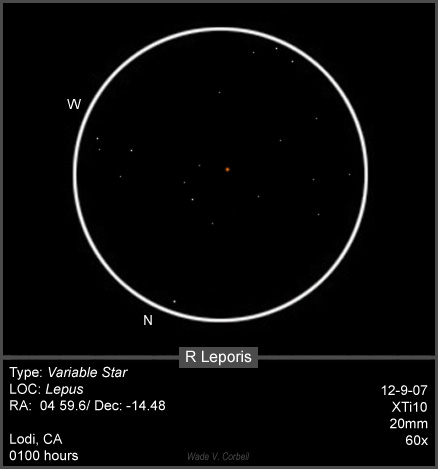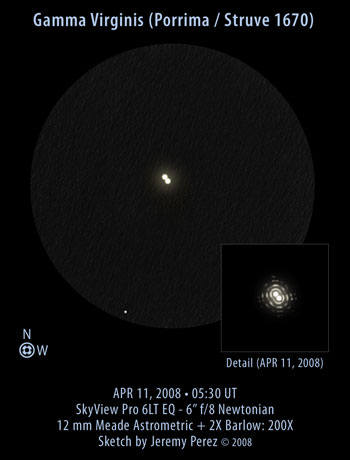
Gamma Virginis
Sketch and Details by Jeremy Perez
Move mouse over sketch to compare change in position from January 2007 to April 2008.
Click the image for a larger version.
About 38 light years away in the constellation Virgo, this pair of twin stars orbit one another once every 169 years. When I last observed them in January 2007, they appeared as a single, elongated, pill-shaped star. On April 10, 2008, the diffraction discs were now clearly separated into two distinct stars with no overlap. Position angle had also proceeded about twenty degrees clockwise since my last look.
During my January 2007 observation, I estimated a position angle of 60 degrees. However, the data in Brian Workman’s Double Star calculator indicated they should have been 49 degrees. I thought this was strange at the time, since I would probably have guessed 45 degrees if that were the case. Recently, I had a look at some more refined data provided by Brian Skiff. Plugging that into the calculator led to January 2007 value of 58 degrees–much closer to my estimate at the time.
For the April 10, 2008 observation, I was able to put the astrometric eyepiece to use on the pair, and arrived at a position angle of 36 degrees. Skiff’s data points to a value of 37.9 degrees. Based on diffraction discs that are not quite touching, I estimated a separation of .92 arc seconds. Skiff’s data comes out to .993 arc seconds.
I was excited to see such a pronounced difference since last year. What a privilege to watch the slow dance of this stellar couple.
| Subject |
Gamma Virginis (Porrima / STF 1670) |
| Classification |
Double Star |
| Position (J2000) |
Virgo [RA: 12:41:39.9 / Dec: -01:26:58]* |
| Position Angle* |
36° [My measurement 2008.27]
37.9° [Skiff Data interpolated 2008.27] |
| Separation* |
0.92″ [My measurement 2008.27]
0.993″ [Skiff Data interpolated 2008.27] |
| Magnitudes* |
3.6; 3.7 |
| Spectral Types* |
– |
| Date/Time |
APR 10, 2008 – 10:30 PM MST (APR 11, 2008 – 05:30 UT) |
| Observing Loc. |
Flagstaff, AZ – Home |
| Instrument |
Orion SVP 6LT Reflector (150 mm dia./1200 mm F/L) |
| Eyepieces/Mag. |
12 mm Meade Astrometric Eyepiece+ 2X Barlow (200X) |
| Conditions |
Clear, calm, first quarter moon |
| Seeing |
6/10 Pickering |
| Transparency |
NELM Mag ~5.0 |
| *References |
The Washington Visual Double Star Catalog, 1996.0 (Worley+, 1996); Brian Workman’s Double Star Calculator (Using orbital elements supplied by Brian Skiff) |

